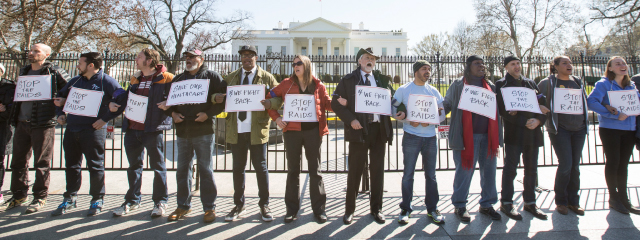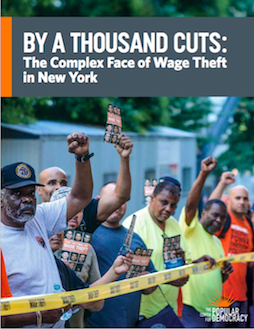By A Thousand Cuts: The Complex Face of Wage Theft in New York
Intro
An estimated 2.1 million New Yorkers are victims of wage theft annually, cheated out of a cumulative $3.2 billion in wages and benefits they are owed.1 In recent years—at least as far back as the passage of the New York Wage Theft Prevention Act of 2010, through 2015, when a series of New York Times articles explored the shocking extent of wage theft and other workplace abuses in the nail salon industry—mainstream elected officials and the press alike have turned meaningful attention to the problem of wage theft in New York State and nationwide. The question is what remains to be done. This brief study does not attempt to answer that question fully, but begins the inquiry by delving into the shape that wage theft takes in New York City and statewide.
Case studies in this report focus on particular employers that low-wage worker advocates have identified as illustrating broader problems in sectors where wage theft is prevalent.
Though this study is merely an entry point to a much broader and deeper analysis, our results point to some common-sense first steps in improving wage theft enforcement in New York City, New York State, and beyond.
Recommendations include the following:
- City, state and federal government should invest in rigorous social science and economic research to evaluate what types of education, enforcement, penalties, and damages are most successful in encouraging workers and others to blow the whistle on wage theft, compensating directly impacted workers, and deterring and reducing wage theft.
- Our legislative and regulatory approach to penalizing wage theft and retaliation should be reevaluated to take into account the impact that wage theft and retaliation have not only on the directly impacted workers but also on competing employers, entire geographic areas, sectors, and the economy.
- Outreach, education, and enforcement efforts need to be tailored to address the specific situations of certain sectors, ethnic groups, and communities.
- Government should partner with, and resource, community-based partners who have established trust in hard-to-reach communities of workers and employers.
- Government should partner with community and labor organizations with expertise in specific sectors and types of wage theft, to assist in bringing forward adequate and accurate testimony and evidence to evaluate compliance in that sector or type of employer.
- Government inspectors and investigators should receive regular training in sector-specific practices in order to rigorously evaluate testimony and facts presented by employees and employers for reasonability.
- Government enforcement needs to explore substantial regulatory, legislative and strategic changes to enable collection of unpaid wages, damages and penalties.
- Pilot projects should aggressively test the use of bonds in exploitative industries, the ability of courts and the Department of Labor (DOL) to freeze assets pre-judgment, and wage liens.
- Public procurement rules should prohibit convicted wage thieves from bidding on public contracts or dispositions at the federal, state and local level, or from receiving public subsidy, with permanent removal from bidding or eligibility lists in cases of egregious wage theft.












